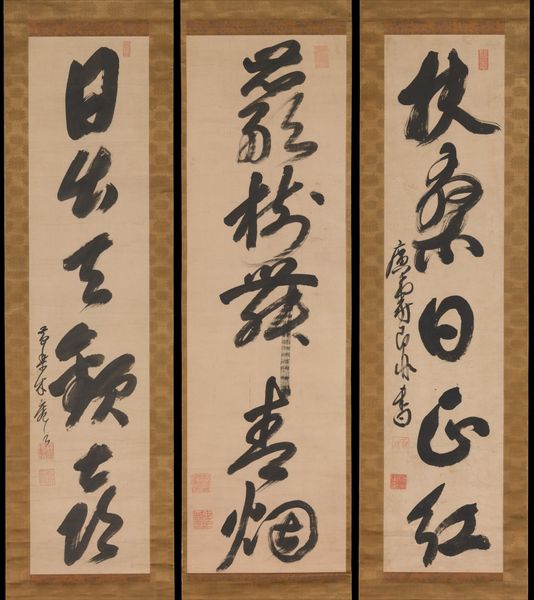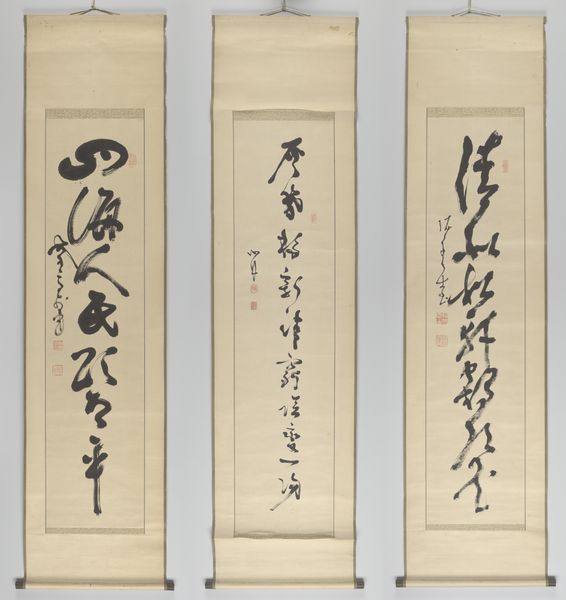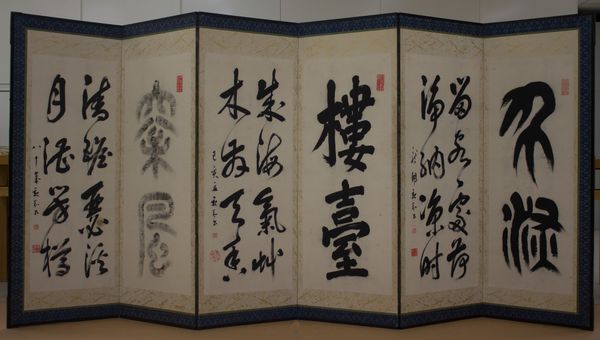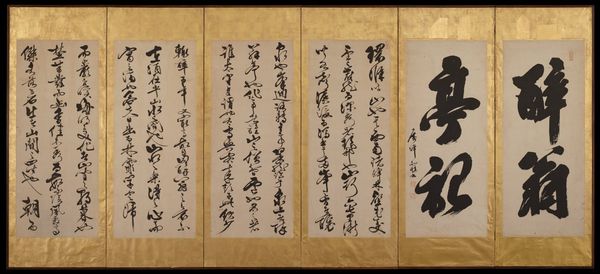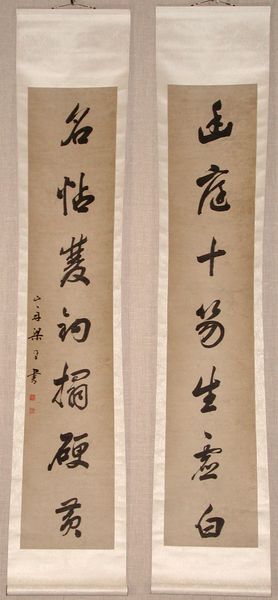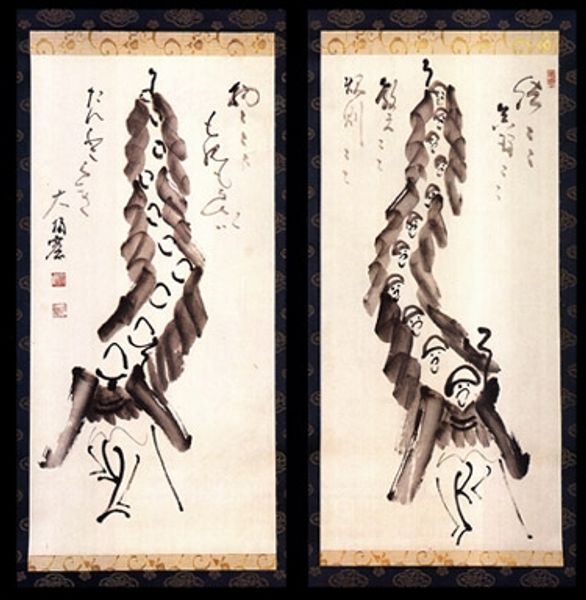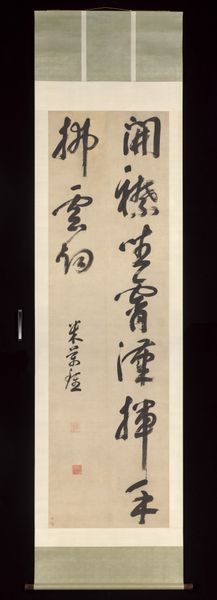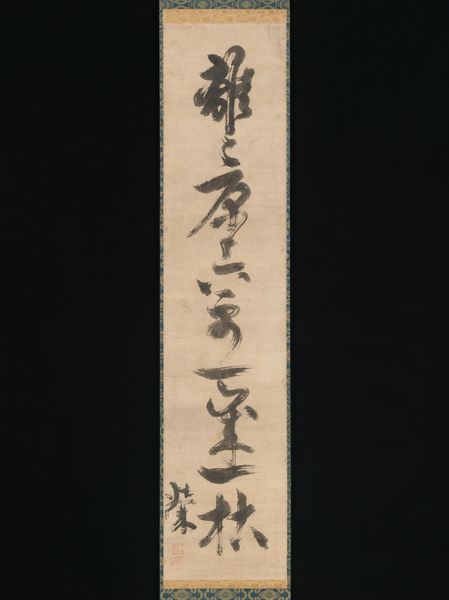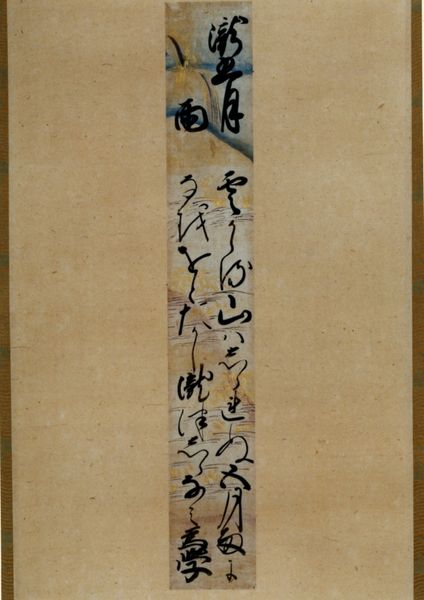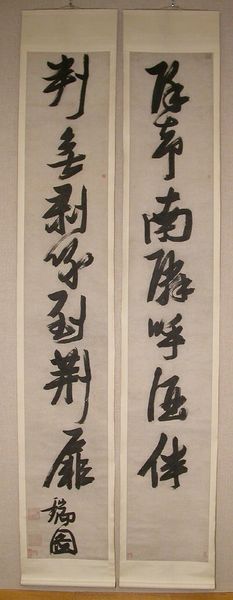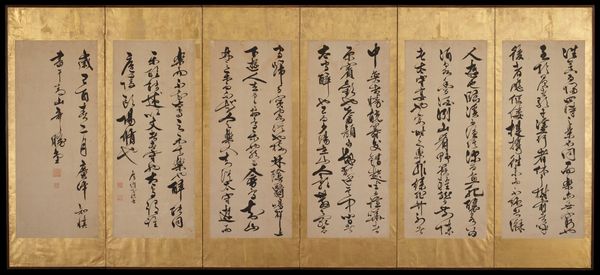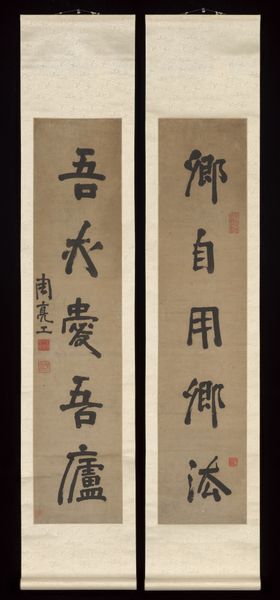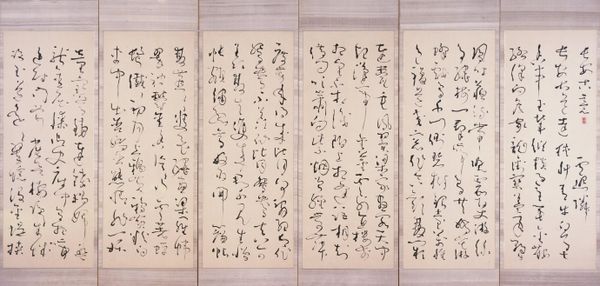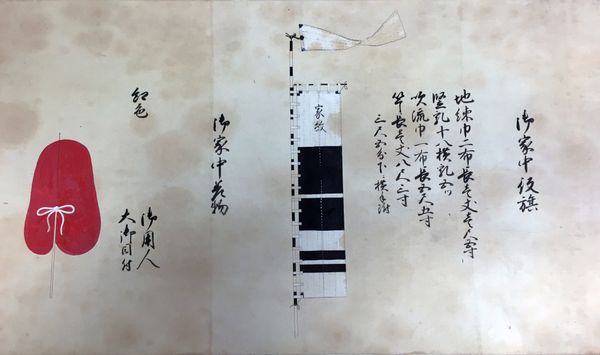
drawing, tempera, paper, ink
#
drawing
#
toned paper
#
tempera
#
hand painted
#
asian-art
#
paper
#
ink
#
watercolor
#
calligraphy
Dimensions: 140.9 × 37.5 cm (55 1/2 × 14 3/4 in.)
Copyright: Public Domain
Katsuzan Dowa created this Triptych of Calligraphy on paper in Japan, likely in the late 17th or early 18th century. Calligraphy had a public role in the Edo period, shaping social and cultural values. Highly esteemed, it was more than just writing; it was an art form inseparable from Zen Buddhism. Note the visual codes of elegant brushstrokes, expressing harmony and balance, and the deliberate use of space. The choice of classical poetry reflects cultural references to nature, philosophy, and morality. Such works often adorned temples or the homes of educated elites. During this time, calligraphy schools shaped artistic production, promoting different styles and techniques. The triptych format itself is self-consciously traditional, displaying continuity with past masters. To fully understand this work, one might research the Edo period's cultural norms, the artist's biography, and the poetry itself. The meaning of art lies within its historical and social context.
Comments
No comments
Be the first to comment and join the conversation on the ultimate creative platform.
